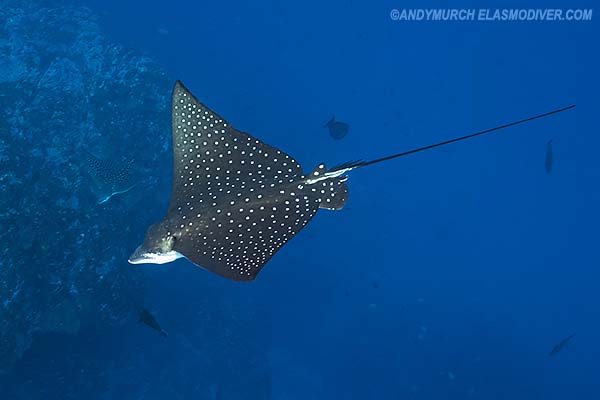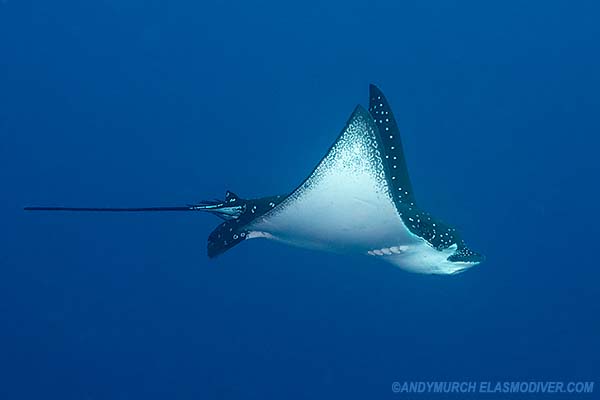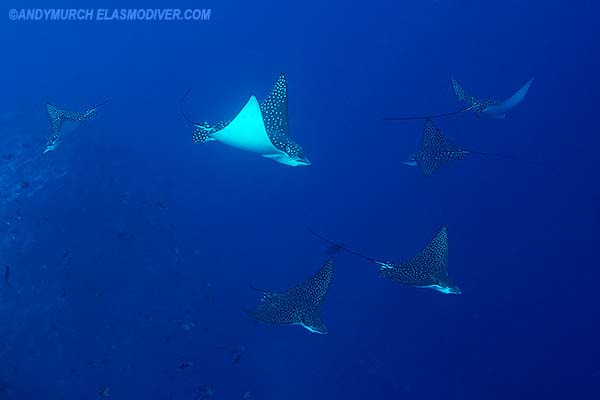|
|
|
SHARK INFO |
|
SHARK |
|
SHARK EVOLUTION |
|
|
|
SHARK DIVING |
|
SHARK DIVING 101 |
|
|
|
CONSERVATION |
|
|
|
PHOTOGRAPHY |
|
SHARK PHOTO TIPS |
|
|
|
RESOURCES |
|
|
|
WEB STUFF |
|
WHAT IS ELASMODIVER? Not just a huge collection of Shark Pictures: Elasmodiver.com contains images of sharks, skates, rays, and a few chimaera's from around the world. Elasmodiver began as a simple web based shark field guide to help divers find the best places to encounter the different species of sharks and rays that live in shallow water but it has slowly evolved into a much larger project containing information on all aspects of shark diving and shark photography. There are now more than 10,000 shark pictures and sections on shark evolution, biology, and conservation. There is a large library of reviewed shark books, a constantly updated shark taxonomy page, a monster list of shark links, and deeper in the site there are numerous articles and stories about shark encounters. Elasmodiver is now so difficult to check for updates, that new information and pictures are listed on an Elasmodiver Updates Page that can be accessed here:
|
|
_ |
SPOTTED EAGLE RAY |
|
View all available spotted eagle ray images in the Shark Pictures Database
Common Names: Spotted Eagle Ray, Indo-Pacific Spotted Eagle Ray, Ocellated Eagle Ray, Sharpwing Eagle Ray, Spotted Duckbill Ray.
Scientific Name: Aetobatus ocellatus. Previously Aetobatus narinari
Synonyms: Aetobatus
guttatus (Shaw, 1804)
Family: Aetobatidae. Containing the single genus Aetobatus. Recently elevated to full family status. Previously considered part of the family myliobatidae.
Identification: A large eagle ray with a greenish, greyish or redish brown dorsum covered in white or bluish white spots. Occasionally, the white spots are slightly larger with black centers - ocelli. Spots may be absent completely or confined to rear of disc. Disc rhomboidal, wing-like. Anterior disc margins convex. Posterior margins concave. Curvature of fins increases towards free tips. Prominent square head extends forward of pectoral fins level with the eye. Snout narrow and pointed. Caudal fins extend posteriorly beyond pectoral margin. Very long, whip like tail often broken off part way. Tail length 2.1-2.5 disc width when in tact. 1 or 2 tail spines, rarely up to 5. Mouth located ventrally. Teeth plate-like. Nasal curtain (upper lip) large, fringed and deeply notched centrally.
Size: Wing span to 300cm. Nose to tail (when complete) max 880cm.
Habitat: Cruises reef faces, sand flats and bays where it feeds on buried invertibrates. Also open ocean. 0-60m
Distribution: Indo-Pacific coastlines from South Africa to the central Pacific Ocean.
Diet: Feeds by plowing its flattened snout through the sand, scooping up buried invertebrates. Preys on a wide range of demersal crustaceans and mollusks such as hermit crabs, whelks, oysters and clams.
Reproduction: Ovoviviparous. May produce litters of up to 10 pups but usually 4 or less.
Conservation Status: the spotted eagle ray is listed as VULNERABLE by the IUCN. The Ocellated
Eagle Ray (Aetobatus ocellatus) has recently been re-described as a separate
species from the White-spotted Eagle Ray (A. narinari). This is a large eagle
ray with a widespread distribution across the Indo-Pacific in tropical and
warm-temperate waters. Recorded over the continental shelf from the surface to
60 m depth in coastal and open ocean environments. It sometimes enters lagoons
and estuaries and is often associated with coral reef ecosystems.
Photographs: Nuku Hiva, French Polynesia.
Similar species: Recent genetic, morphological and parasitic study has split the spotted eagle ray into three species that can be identified easily by range. The spotted eagle ray Aetobatis ocellatus is present in the Indo-West/Central Pacific region. The whitespotted eagle ray is confined to the tropical Atlantic including the Gulf of Mexico and Caribbean Sea, and the Pacific eagle ray inhabits the tropical Eastern Pacific coast and Galapagos Islands. Further studies may eventually split the central and western populations of A.ocellatus into two distinct species.
Reaction to divers: Somewhat shy and hard to approach. Easiest to approach when they are preoccupied with feeding.
Diving logistics: A common sight on many coral reefs throughout its range but appearances are often unpredictable. The dive site off Nuku Hiva where these images were taken, is one of thousands of sites where these rays gather. Elsewhere in French Polynesia, Rangiroa is also a hotspot. In February, spotted eagle rays mate on some of the deeper reefs (40-50m). At that time of year, you may see great hammerheads predating on them.
Citations:
|
























